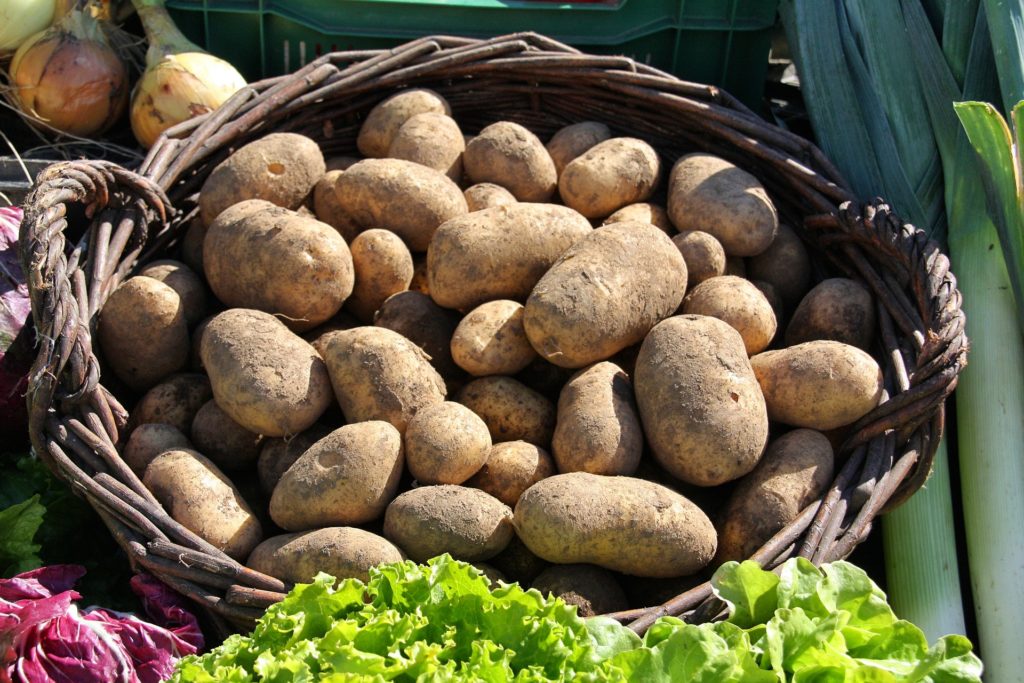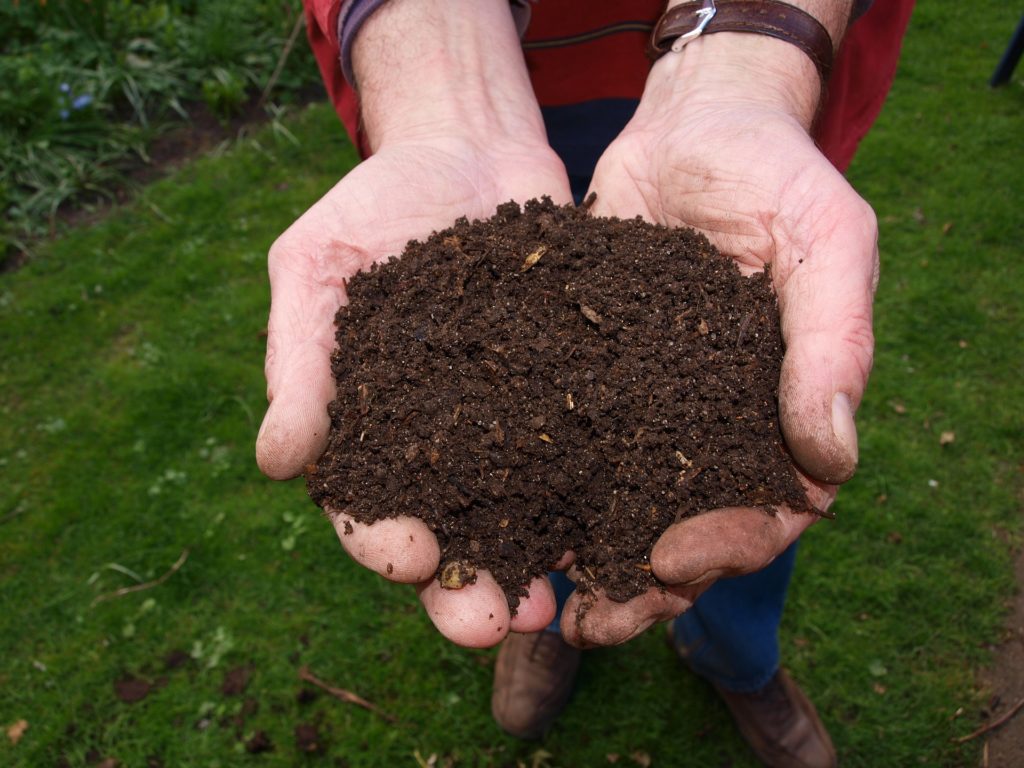So, you’re planning to start a potato tower, bag, or cage.
Maybe you’re attempting a deep mulch method in a raised bed.
Or perhaps your potato towers completely failed, giving you either tiny little potatoes or none at all; despite lots of beautiful, green, leafy growth throughout the growing season. Which, only brought you here in frustration, angry and confused with all of the attention they were given.
Today, I’m going to tell you everything that you should NOT do if you would like to see a decent harvest from your potatoes.
And if you have already failed to succeed once, try to pinpoint where you went wrong; chances are, it’s here in this list!

Potato Vines Are the Wrong Variety & Are Getting Too Tall!
That’s right: your vines got wayyyy too tall! I could never recommend burying the potato plant more than 18″, but different folks have different strokes. Never exceed 24″ in depth, though. Many of the potato towers and cages that you see have the vines growing in excess of 2 feet, some even going to 3 and 4 feet in height. Well, that’s exactly where you’ll mess up. If the vine is continuously having its foliage and stem buried, it has to direct its energy into making more and more leaves on a longer stem. Guess what’s not going to receive that energy? That’s right. The potatoes. Since the plant has to struggle to gather sunlight to grow and thrive, it simply will not have the energy to dedicate to tuber production. Is one extra potato worth sacrificing 5 good sized ones over? No. Probably not.
If you don’t plant indeterminate seed potatoes, you are absolutely wasting your time with a potato tower; if the plant is determinate (generally anything other than a late season variety), the potato vine growth is predetermined. The potatoes will grow within the 6 inches above the seed potato in my personal experience. With an indeterminate variety, the tubers can grow further up the length of the vine.

Potatoes & Heat
If you’re trying to grow potatoes in the middle of a sweltering hot summer, you might as well assume your harvest is small or nil. Unless you are using a strategic combination of cooling techniques, such as growing in lots of straw with partial afternoon shade, your potatoes may not stand a chance. Potato tuber development drops off sharply at 80*F. If you have steady, hot temperatures, it will significantly impact tuber production. Time your potatoes for far earlier in the season.
Not Enough Fertilizer
Potatoes require potassium and phosphorous to produce tubers. When the soil is lacking, the tubers will be lacking, too. Try using fertilizers that are formulated for root vegetable growth, as they will deliver far more potassium and phosphorous than nitrogen. Don’t over apply fertilizer, either; less is more, especially if your soil is not greatly depleted by intensive gardening over the last few years.

Too Much Fertilizer!
I’m sure this one just confused you. Remember when I said “they will deliver far more potassium and phosphorous than nitrogen” above? That’s because nitrogen is key to growing lots of foliage. If the plant is taking up excessive nitrogen, it will gift you one, big, beautiful bush; with an embarrassing potato harvest. Again, if the plant is dedicating its energy to growing leaves, the tubers will suffer.
Just a Little Bit Thirsty…
When the plants begin to show signs of flowering, ensure that they do not dry out during hot weather or a drought. If the plant dries out during a critical point in tuber development (after flowering), it won’t produce as nice of a crop. If you are using straw, that will help to contain the water. However, cages, towers, and bags can dry out quickly on a sunny day. Potatoes in containers or above ground beds must be tended to frequently during this time.

Not Enough Light
If you planted your potatoes in an area that doesn’t receive 8 hours of sun per day, you’re going to have a problem. A lack of sunlight means a lack of photosynthesis, and a lack of food and energy for the plant. The plant will (again) struggle to put that energy towards more leaves to gather more light, rather than tubers. Unfortunately, these plants will also grow slower at the same time; which is double the trouble. Avoid planting your potatoes in an area that does not receive 8 hours of sunlight if you want them to produce potatoes for your family.

Incompatible Companion Plants
If you plant potatoes near plants that they don’t like, such as squash, you may find that there are very few potatoes to collect. Some plants emit chemicals that stunt the development of tubers, so watch your spacing in the garden. Keep potatoes far away from these plants if at all possible.
If the soil was previously occupied by any of those plants in past years, it is very possible that they left behind signals that kept the tubers from developing. I have yet to experiment regarding this unique and intriguing trait among many varieties of squash plants and the potatoes, but I would not recommend pushing it if you want a great potato harvest.
Is there an app that watches regional weather and offer suggestions on how to tend plants at that time?
I’m actually not aware of such an app; however, that would be an incredible resource for all of us! I’m sure some weather apps offer alerts when temperatures dip below a certain threshold. Thanks for dropping in, Ruth!